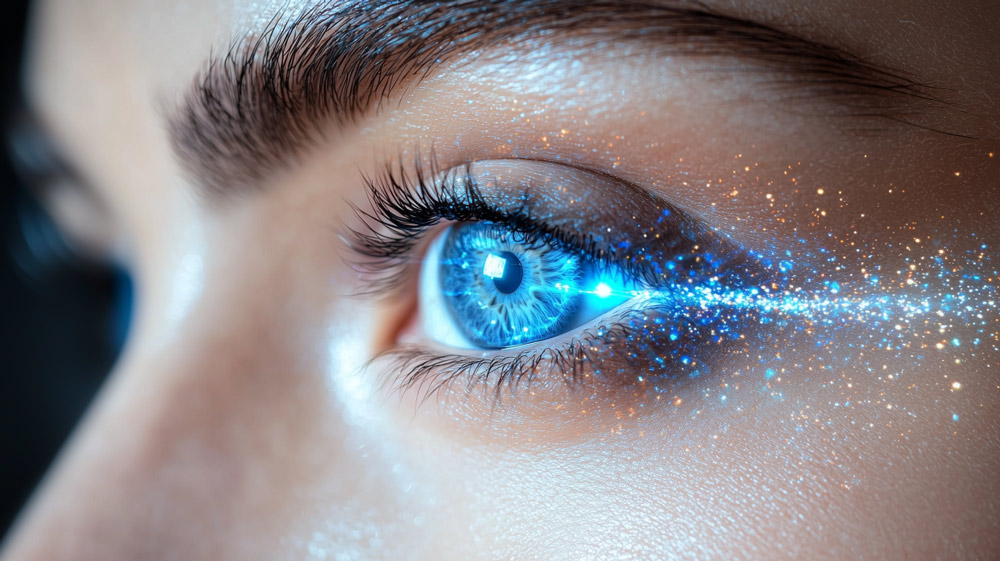You’re halfway through your workday when your eyes start to sting. The screen goes slightly blurry, and no amount of blinking seems to help. Sound familiar? You might be experiencing digital eye strain, also known as computer vision syndrome (CVS)—a growing issue in our screen-filled lives. Whether working on a laptop, scrolling on your phone, or gaming, excessive screen time can leave your eyes tired, dry, and unfocused.
So, how do you know when it’s just temporary discomfort, and when to see an eye doctor?
From Sunrise Scroll to Sunset Strain
Sarah logs in at 8 AM and doesn’t look away until after dinner. By evening, she feels a headache building. Her eyes water, and the text on her tablet seems to swim across the page. She chalks it up to fatigue—until she learns that her nonstop screen use is causing her symptoms.
Digital eye strain, CVS, strikes when screen time exceeds what the eyes can comfortably handle. Every minute spent staring at pixels and fixating on small fonts stresses the ocular system.
Common Symptoms of Screen-Induced Eye Fatigue
When you check your email for the tenth time and your vision blurs, that’s a warning flag. Common symptoms of excessive screen time on the eyes include:
- Dry, gritty sensation in your eyes
- Blurred or double vision
- Headaches around your temples or brow
- Neck and shoulder pain from leaning forward
- Light sensitivity or occasional eye twitch
Notice these signs? They point to two hidden issues: reduced blink rate and blue-light exposure.
Why Your Blinks Aren’t Enough
When you read a book, you blink about 15 times per minute. On a screen, that rate can drop by half. Less blinking means your tear film can’t refresh itself. Over time, your eyes dry out and your vision falters.
Quick Fix: Every 20 minutes, close your eyes for two to three seconds. Then blink fully 10 times. This simple ritual jump-starts your natural lubrication.
Blue Light’s Stealthy Impact
Late-night scrolling under LED lights disrupts your sleep cycle and strains your retina. Blue light sits at the high-energy end of the visible spectrum. Too much of it can accelerate oxidative stress in your macula—the center of sharp vision.
Small Change: Switch your device to night mode or use blue-light–filtering glasses. Even a tinted screen protector can soften the harshest glow.
The 20-20-20 Rule Saves the Day
Ophthalmologists recommend a rhythmic break system: every 20 minutes, look at an object 20 feet away for at least 20 seconds. This “20-20-20 rule” rests your ciliary muscles (the tiny fibers that focus your lens) and resets your eyes.
Putting it into practice: set a gentle alarm or install a break-prompt app. Within days, you’ll notice fewer headaches and less fatigue.
How to Set Up a Screen-Friendly Workspace
Your desk setup can amplify—or alleviate—digital strain:
- Screen Height: Position the top of your monitor at or just below eye level.
- Viewing Distance: Keep your screen about an arm’s length away.
- Lighting: Use indirect lighting to reduce glare. A desk lamp with adjustable brightness helps.
- Seating: Sit with your feet flat on the floor and your back supported.
These tweaks preserve your posture and ease the neck tension often accompanying long hours online.
When Should You See an Eye Doctor About Digital Strain?
Most digital-eye symptoms clear up with better habits. But if dryness persists or your vision stays blurry, it’s time for an eye exam.
- Tear-film evaluation and dry-eye screening
- Blue-light sensitivity testing
- Comprehensive refraction to fine-tune your prescription
- Personalized eyewear recommendations—blue-light lenses, anti-glare coatings, or multifocal designs
Taking these steps can halt minor discomfort before it becomes a chronic issue.
Long-Term Care & Comfort
- Lubricating Drops: Choose preservative-free formulas and use them on demand.
- Warm Compresses: A daily 5-minute compress before bed keeps your meibomian glands flowing.
- Regular Breaks: Build mini-stretches into your calendar. Stand, stretch, and walk around every hour.
- Follow-Up Exams: Even with perfect vision, annual comprehensive exams catch conditions like glaucoma or macular changes early.
Balance Is Everything
Screens connect, empower, and entertain us, but shouldn’t cost us comfort. By understanding the effects of excessive screen time on the eyes and adopting targeted strategies, you can keep your vision sharp and your days pain-free.
Digital eye strain isn’t just an inconvenience—it’s your eyes telling you they need support. Whether it’s adjusting your screen setup, trying the 20-20-20 rule, or updating your glasses, your eye doctor can help you find relief. If you’re worried about your eye health, schedule an eye exam today!

